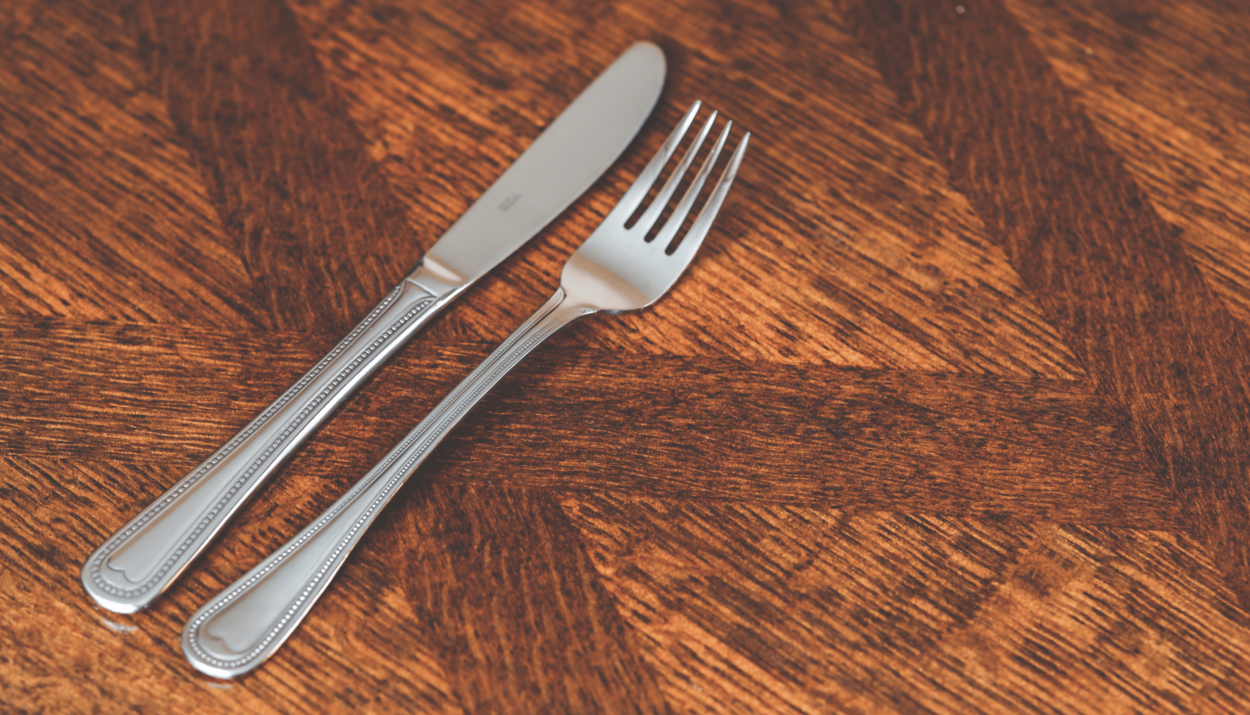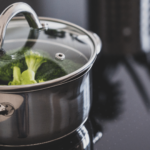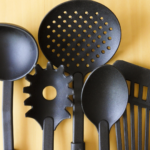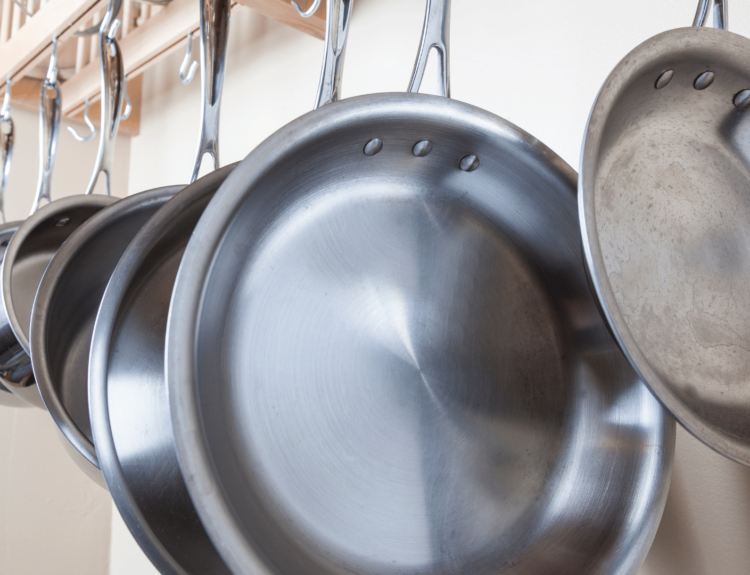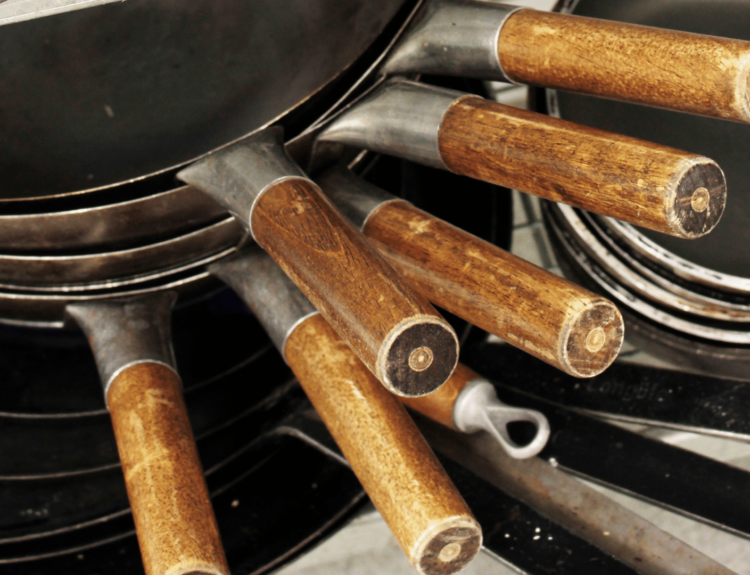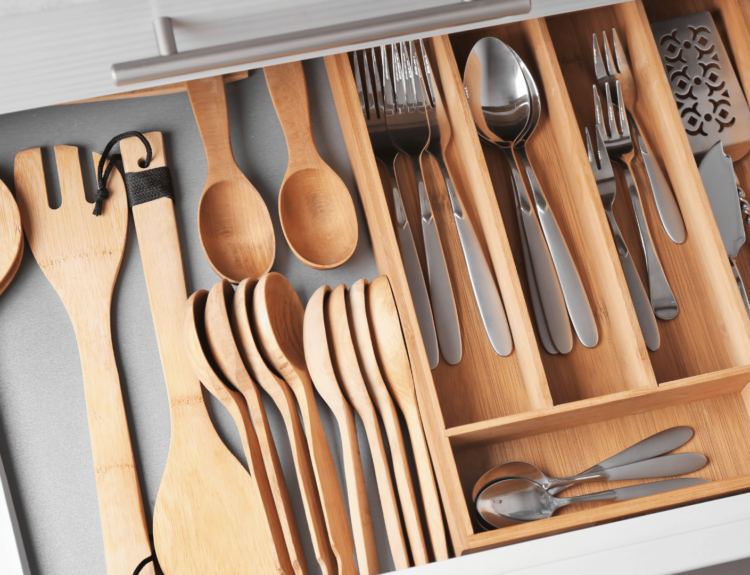Silverware adds a touch of sophistication and elegance to any dinner table, but how do you know if your silverware is actually made of silver? Silver plated silverware is a common alternative to solid sterling silver, but it can be hard to tell the difference without proper knowledge. In this guide, we will go through everything you need to know about identifying silver plated silverware. We will also explain the differences between sterling silver and silver plated utensils, as well as the health implications of using them for eating. Learn how to distinguish between real and fake silverware by examining physical appearance, weight, and testing with magnets. You’ll also get expert tips on how to use hallmarks as a guide and when to avoid acid testing kits. So if you’re tired of wondering whether your utensils are made of real silver or not, read on to get all the answers you need!
Understanding Silver in Utensils
Distinguishing silverware is crucial. Authenticity lies in understanding silver purity. Real silver flatware involves checking the silver content and interior metals. Identifying the real thing involves understanding pure silver in its pure form.
The History of Silver Usage in Culinary Tools
Silver has been an integral part of culinary tools since ancient times, reflecting a long-standing tradition of elegance and functionality. Dating back to ancient civilizations, the use of silver in utensils has a fascinating historical significance. Exploring this historical evolution offers insights into how dining etiquette has developed over time. The incorporation of silver in culinary tools demonstrates the enduring appeal and practicality of this precious metal within the realm of dining and food culture.
Why Silver is Used in Utensils
The use of silver in utensils is rooted in its unique properties and aesthetic appeal. Firstly, silver is chosen for its antimicrobial characteristics, making it a hygienic choice for culinary tools. Its malleability allows intricate designs, adding an elegant touch to dining experiences. Additionally, silver’s corrosion-resistant nature ensures the longevity of utensils, maintaining their beauty over time. The luster of silver enhances the aesthetic appeal of culinary tools, giving them a timeless and sophisticated look. Exploring why silver is the preferred metal for elegant dining utensils is not only intriguing but also sheds light on the enduring allure of silverware.
How to Identify Silver Plated Silverware
When identifying silver plated silverware, it’s important to use a white cloth to check for authenticity. Using ice cubes is also a good idea to test the genuineness of the silverware. Understanding the hallmark is crucial in differentiating between silver plate and genuine sterling silver. Knowing the underlying metal of the silver plated silverware is essential for authentication. It’s important to differentiate between silver plate and sterling silver by authenticating the purity of the silver. Utilizing these methods will help in determining the authenticity of the silver plated silverware without requiring any professional assistance.
Physical Appearance and Weight
When identifying silverware, genuine sterling silver exhibits a black mark when tarnished. Compared to sterling silverware, silver plated silverware tends to be lightweight. Authentic silverware is durable, resistant to rust and corrosion, and may reveal nickel or copper beneath the silver coating. Additionally, the patina on authentic silverware is a definitive sign of its genuine quality. Understanding these physical appearances and weights is crucial in distinguishing between real silver and silver substitutes. It’s essential to remember that spotting these characteristics without the need for frequent use of testing tools makes identifying real silver flatware easier.
Testing with Magnets
When identifying silverware, using magnets is a simple yet effective method. Sterling silver, unlike silver plated items, is not magnetic, making it easy to distinguish between the two. The absence of a magnetic reaction indicates authentic silverware, as genuine sterling silver is not attracted to magnets. Therefore, magnets are reliable tools to identify the authenticity of silverware. By testing silverware with a magnet, one can quickly ascertain whether it is genuine sterling silver or a silver-plated item.
Check for Flaking and Discoloration
When inspecting silverware, look for signs of flaking, discoloration, or rusting, as these are indicative of silver plating. If the silverware exhibits flakes or chips where the underlying metal is exposed, it is likely silver plated. Peeling of the silver coating is also a telltale sign of silver plating. Scrutinizing the silverware for these signs is crucial as they help verify its authenticity. Paying close attention to any discoloration is an essential step in identifying silver plated silverware. These visual cues play a significant role in determining the authenticity of the silverware.
Sterling Silver Vs Silver Plated
Understanding the disparity between sterling silver and silver plated items is crucial for collectors and buyers. Scrutinizing purity, identifying markings, and recognizing value are essential steps to differentiate authentic silverware from plated ones, preserving the real thing from imitations.
Defining Sterling Silver
Sterling silver, a precious metal featuring a high silver content, is distinguished by its hallmark or stamp, signifying its purity. This durable alloy is ideal for crafting enduring silverware, and recognizing its hallmark is crucial to verifying authenticity. Understanding the hallmarking process of sterling silver is essential in ensuring the genuine nature of sterling silverware. From assessing the purity of the silver to scrutinizing the marking, it is imperative to have a comprehensive understanding of these aspects to identify genuine sterling silver flatware.
The Process of Silver Plating
The process of silver plating involves adding a thin layer of silver to a base metal, enhancing the appearance of cutlery. Understanding these steps is crucial for authenticating silverware and identifying the underlying base metal. This technique is employed to improve the aesthetic appeal of base metal utensils, providing valuable insight into the creation of silverware. Exploring the silver plating process yields essential knowledge for distinguishing between genuine sterling silver flatware and silver substitutes, highlighting the importance of discerning the coating and underlying metal.
Is Silver Safe for Eating Utensils?
Silverware is commonly used for eating utensils due to its antibacterial properties, durability, and tarnish-resistance. It has been a popular choice for centuries, thanks to its precious metal content. Regular use helps maintain its patina and authenticity. Various materials are used in creating silverware, including nickel.
Health Implications of Silver Utensils
When considering silver utensils for dining, it’s important to note the health implications. Authentic silver flatware is not only durable but also tarnish-resistant, making it a safe choice for your dining needs. The purity of the silver content in silverware makes it a good and genuine option for your dining utensils. Genuine sterling silver cutlery is both durable and authentic, offering a safe choice for your dining requirements. Whether it’s sterling silver flatware or genuine sterling silver, the silver content ensures a durable and safe option for your dining table. With its antibacterial properties and durability, using silverware is a good idea for maintaining hygiene and adding an elegant touch to your dining experience.
Expert Tips to Distinguish Between Sterling and Plated Silver
Distinguishing between sterling and plated silver is crucial. Examining platters, consulting antique experts, magnifying glass inspection, thin silver layer checks, and imprint examination are valuable techniques. These expert tips ensure authentic silverware identification.
Using the Hallmark as a Guide
When identifying genuine sterling silver flatware, the hallmark provides a valuable guide to its authenticity and purity. This unique imprint on silver flatware serves as an indication of its genuine nature and helps in determining the purity of the silver content. By closely examining the hallmark, individuals can gain valuable insights into the authenticity and purity of the silver. The presence of specific markings on sterling silver flatware is an essential guide in determining the authenticity and purity of the silver content. These hallmarks offer a reliable way to distinguish genuine sterling silver flatware from silver substitutes or plated silver, enhancing the overall understanding of the silver’s quality and value.
Consulting a Silver Expert
When it comes to verifying the authenticity and purity of silver flatware, seeking guidance from a silver expert is invaluable. Consulting a genuine antique expert is a good idea to distinguish between sterling and plated silver. Their valuable insights can help determine whether the silverware is genuine sterling silver or simply silver-plated. Expert advice is essential when it comes to distinguishing between different types of silverware, especially given the variety of materials used in crafting them. By consulting a silver expert, you can gain a deeper understanding of the authenticity and purity of the silver flatware without resorting to guesswork. The expertise of a silver expert is crucial in ensuring that you are dealing with genuine sterling silver, making it a worthwhile investment in maintaining and caring for your silverware.
When to Avoid Acid Testing Kits
It’s important to avoid acid testing kits when examining silver flatware to prevent potential damage. These kits should be used cautiously to avoid any harm to genuine sterling silver. Inexperienced use of acid testing kits could lead to harmful effects on real silver flatware, so it’s best to steer clear of them in order to preserve the authenticity of the silver. Caution is advised when considering the use of acid testing kits to prevent any corrosion or breakdown of the silver flatware. Using alternative methods that are less likely to cause harm, such as visual inspection or consulting an antique expert, would be a good idea to accurately assess the authenticity of the silver content.
Are All Silverwares Real Silver?
Not all silverwares are made of real silver. Some may be silver plated or made of stainless steel. While some silverwares are genuine silver, others mimic its appearance with silver plating. Base metals like stainless steel can also be used to make silverwares. The underlying metal can vary from stainless steel to genuine silver.
But…What If My Silverware Does Not Have Any Markings?
If your silverware lacks any markings, it may indicate silver plating instead of genuine sterling silver. Authentic sterling silver flatware typically carries marks indicating its authenticity and purity. Without markings, determining the authenticity and purity of the silverware becomes challenging. The presence of a marking is a reliable indicator of its genuineness and purity.
Frequently Asked Questions
What is silver plating and how does it differ from solid silver?
Silver plating is a thin layer of silver applied to a base metal, whereas solid silver, also known as sterling silver, is made entirely of silver and is more valuable. Silver plating is less expensive and can be more practical for everyday use. The value of silver-plated items depends on the quality and thickness of the plating.
Are there any DIY methods for testing if silverware is silver plated?
Yes, there are DIY methods available to determine if silverware is silver plated. One method involves using a magnet to see if the item is attracted or repelled. Another method is using nitric acid to observe any reactions on the surface. It’s important to handle chemicals with caution and consult an expert for accurate testing.
Conclusion
Identifying whether your silverware is silver plated requires attention to detail and a few simple tests. Pay close attention to the physical appearance, weight, and any signs of flaking or discoloration. Testing with magnets can also help determine the authenticity of the silver plating. It’s important to understand the difference between sterling silver and silver plated silverware, as well as the health implications of using silver utensils. If you’re unsure, consult a silver expert or use the hallmark as a guide. Remember to properly care for your silverware to maintain its quality and longevity. While not all silverware is made of real silver, following these guidelines will help you make an informed decision about your utensils.

